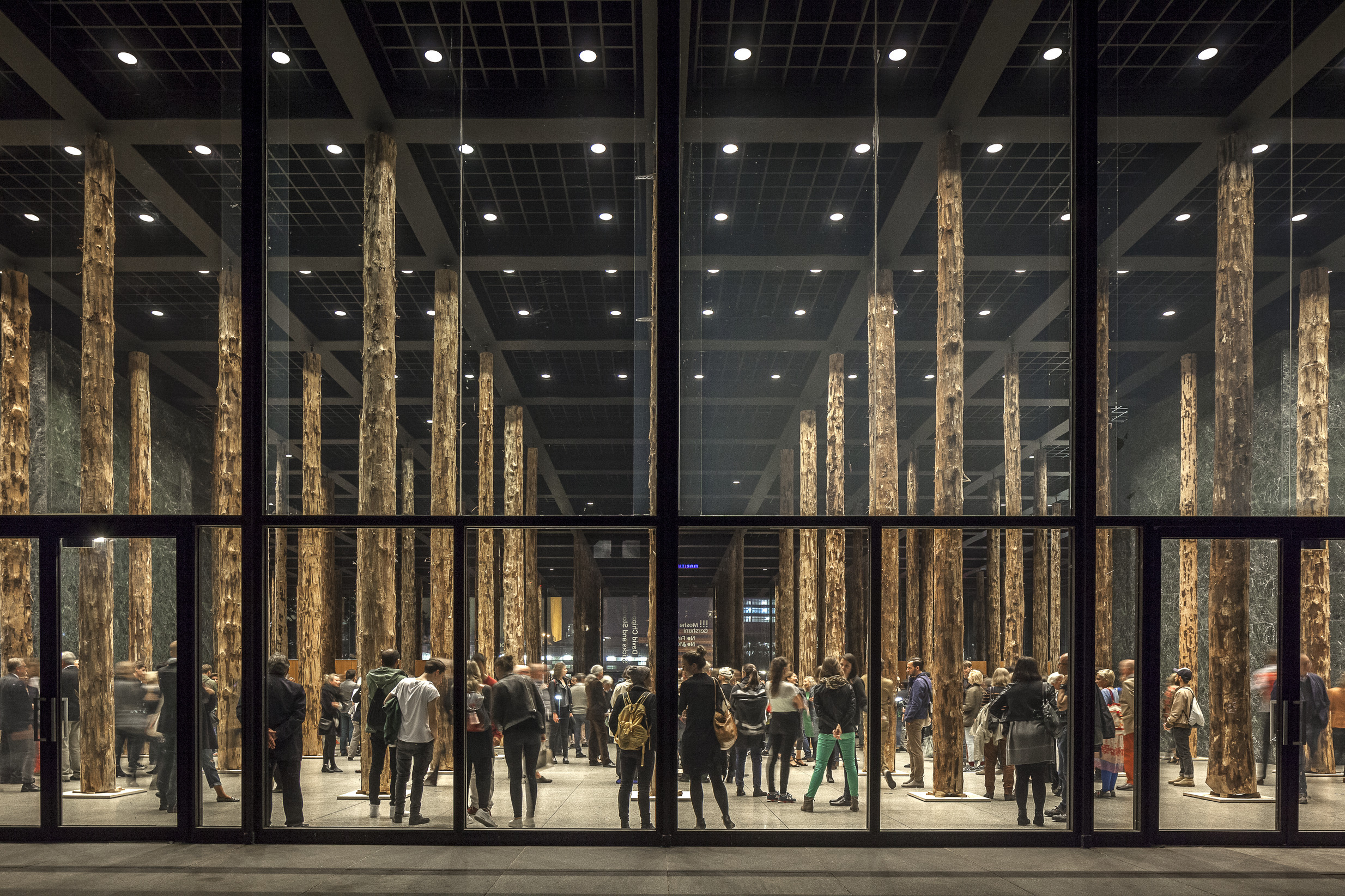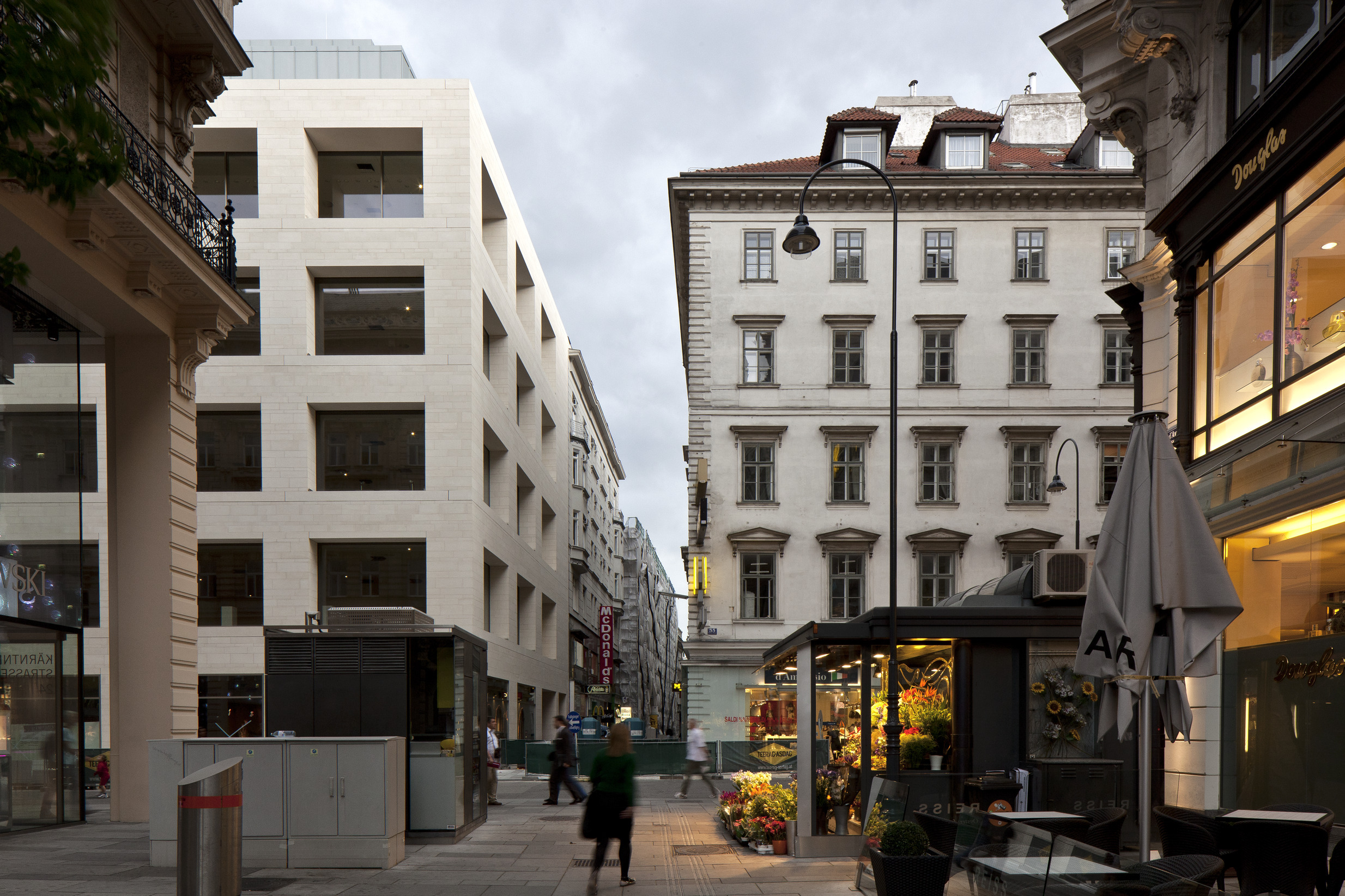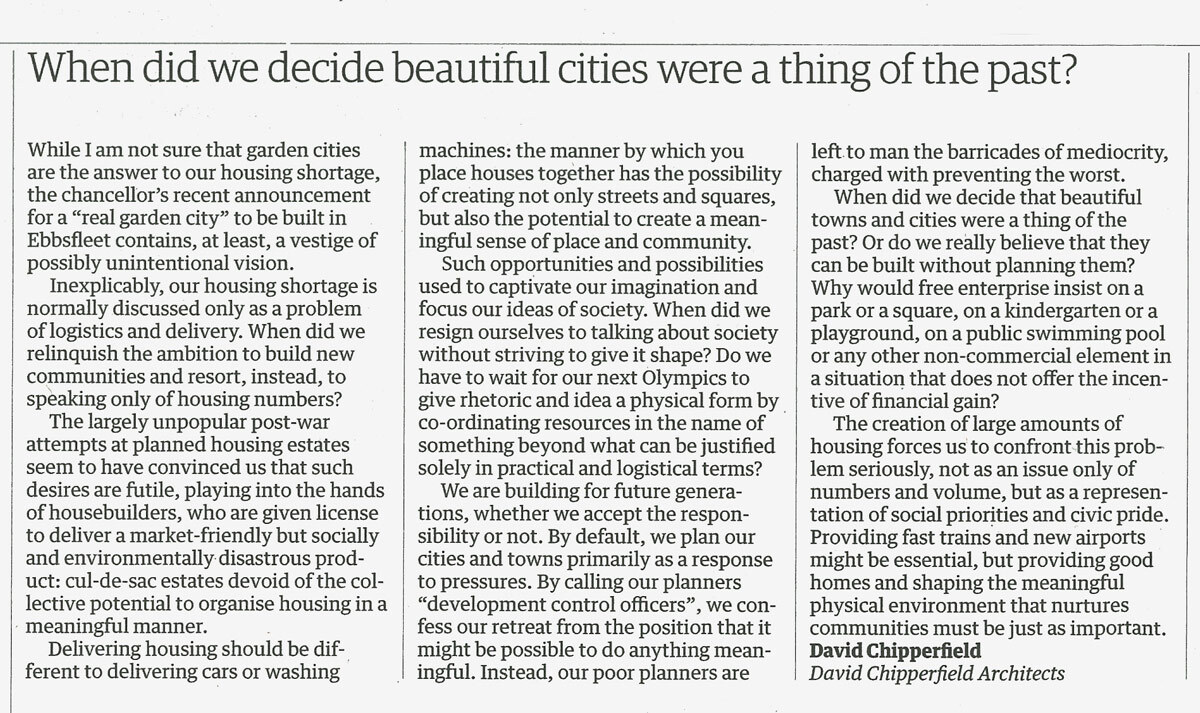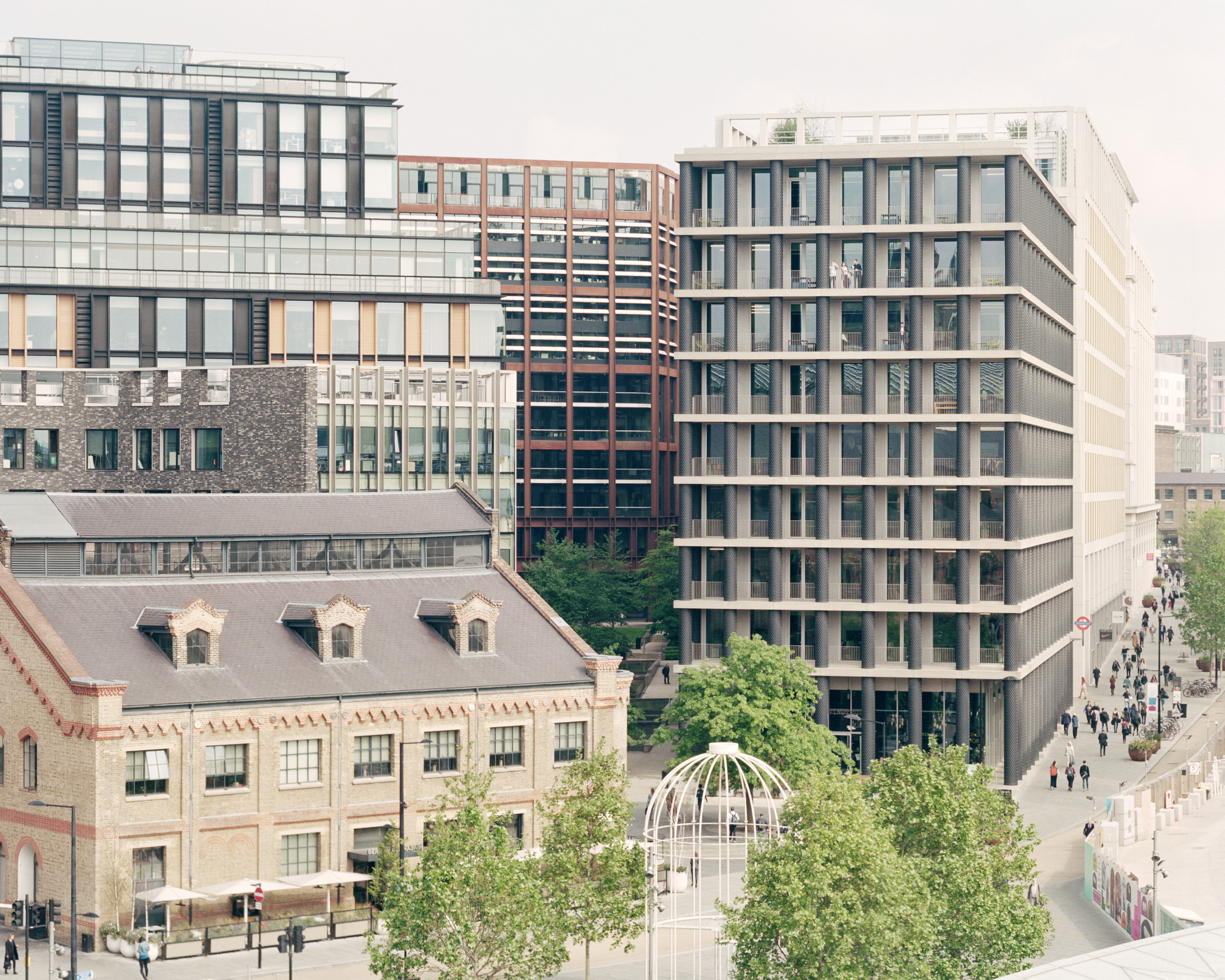Speech delivered at the Falling Walls conference held at the Neue Nationalgalerie in Berlin on the occasion of the 25th anniversary of the fall of the Berlin Wall.
It is an honour to speak at the opening of this conference falling walls 2014. Thank you for coming to the Neue Nationalgalerie (New National Gallery) of Ludwig Mies van der Rohe.
When this building was opened, the second building of the Kulturforum it was located a few hundred metres from the wall.
This great building of Mies van der Rohe is entwined in the complex story of the Kulturforum and West Berlin's attempt to reconcile its loss of centre through the initiative of making a new cultural centre. The division of the city left West Berlin the task of reorganising its infrastrustruture, both practical and representational. From every point of view this process was a complicated one.
Architecture played an important role, not only from the point of rebuilding and reconstruction but in its representational and emotional potential. Having lost, as it were, so many of the important cultural and symbolic institutions to the eastern side of the city, Berlin had to once again try to reassemble its civic order, trying to make a whole city out of half of one, and the half which didn't have the great monuments.
This opportunity wasn't lost on the architects planners and politicians of the time. New social, cultural and administrative structures needed to be built. The project of the Kulturforum, where we stand today symbolises perfectly the practical, political and cultural challenge for this new city. Counter institutions needed to be built to replace those which had been separated by the wall and lost to the East.
In this operation Hans Scharoun, through his masterplan with the Philharmonie and the national library, and Mies van der Rohe with this building, at first known as the museum of the 20th Century, later to be named as the Nationalgalerie, shared the responsibility of not only building new monuments for a city feeling its way towards finding an appropriate representation of the state but also trying to make a new symbolic and cultural heart for West Berlin. That this new heart should not be located within the more comfortable centre of West Berlin but as close as possible to the wall, to the front line as it were, made its symbolic role even more explicit.
By attempting to engage both physically and virtually with the newly imposed line that ran from the Baltic to the Black Sea, bringing this iron curtain into focus, they optimistically accepted the inevitable difficulties, if not impossibility, of making a centre in this no place. Rarely has there been a more physically complicated or politically contrived urban plan or an architectural mission so impossible.
The two architects took different approaches to this task, Scharoun decided that he should create new types of collective space, a philharmonic hall where the relation between audience and musicians was completely changed ,bringing musicians, the audience, music and space into a completely new arrangement between what he called producer and consumer, expressing his dreams of a new society and turning upside down the conventions of structures so tarnished by the traumatic events of recent history.
He continued this experiment with the state library eight years later, once again surprising convention and giving physical form to new ideas creating a democratic atmosphere of more organic forms and spaces where the individual and the collective could coexist not in a great hall of knowledge but in an apparently open ended framework, where reader and researcher could feel comfort in the search for knowledge and engaged once more in a collective desire to treasure, cherish and regain the fundamental values of society.
Mies van der Rohe, more distanced and detached and somewhat exotic, returning to the city he had left in 1937, took an opposite approach to the task of building a new national symbol for a new society, in a No Man’s Land on the edge of the destroyed city.
Instead of finding new forms through experimentation and struggling with insecurities of a new society, Mies reasserted the idea of order, through a humane classism, building a temple, not of stone but now of glass, a new transparency, reconsidering through this transparency not only the enthusiasm of a modern and progressive world but a new openness between inside and outside and between the individual and the structures of society.
Today we are left in the Kulturforum with a typical Berlin condition. A complex and fascinating but convoluted layering of ideas and problems, a place in the city, badly destroyed in the war compromised by the construction of the wall, and then confused again by the fall of the wall. A place that is testament like Berlin itself both to the bad that we can do but ultimately to human resilience and the search for good.
Today Berlin still struggles with its unsatisfactory form, the gaps, the duplications, the unfinished nature of the city, a city that has always been in flux. A city so complicated by its histories and counter histories that its urban fabric seems to resist all attempts to reorder it.
Despite this, or probably because of this, Berlin seems to have become a great city again and no one is more surprised than the Berliners themselves. To them it isn't clear whether they live in a great political European capital, or a charming hippy town of pop-ups and clubs, they don't know whether to be happy that old Tegel still lives on or furious they don't have an international airport, they don't know whether they really want the Schloss back and they don't know whether the arrival of Frank Gehry and his twisted tower on Alexanderplatz is the beginning of a bright new future or the end of a more innocent era.
They know they don't have a beautiful city but they feel strongly about how it should be and how it should look. Berliners have maintained a sense of participation and even ownership that seems to have been lost in so many other cities. This is why Berlin fascinates, Berlin is not only poor but sexy but engaged and vital, a reminder of the more messy, contradictory and organic qualities that all cities should have but is elsewhere being replaced by homogeneous commercialism and a more extreme segregation of rich and poor.
London, Doha, Shanghai and others become investment centres welcoming development that brings wealth and image but little urban or civic substance. Against this Berlin seems charmingly reflective and suspicious and its citizens rather unimpressed by the apparent imperatives of private investment and global image.
Why is Berlin different? Why do we now think that Berlin has something that other cities don't have? Reconstruction prolonged by the division of the city and then reunification means that while other European cities have been rebuilt, Berlin still has gaps, physical social and economic. It also maintains strange physical proximities and rich social overlaps that have elsewhere been smoothed out in a process of urban gentrification.
So this Berlin that is full of gaps and no great beauty apparently manages to maintain a sense of itself or rather we should say that it is engaged in a continuous process of self-description. This confused and less than beautiful city, this apparently dysfunctional city, the physical result of so much trauma and division becomes charming full of life and the envy of other cities, not for its beauty or its wealth but because of its vitality.
Cities record our fragile attempts to make ideas of society in physical form. They are records of our visions and our mistakes. We have always been clumsy in this undertaking. It tends to be a clumsy process, partly because of the decision machinery and partly because of the mismatch between the tendencies of investment and the poorly articulated expectations of the citizen.
Unfortunately, when we travel the world we see that we are becoming clumsier in this respect. The form of our cities seem to have nothing to do with our ideas of society, rather investment looks over our heads in order to pursue its own needs and to benefit the rules of global economics.
We are now at a time when image dominates, when we are more susceptible than ever to judge by appearance. Architecture has increasingly moved into this world of consumerism, new buildings seem more concerned with what they look like and less concerned with what they are and what they do.
Here in Berlin, where appearance isn't everything, where so much seems arbitrary, where the great waves of recent history have done so much damage, we should admire what has been achieved in the last 25 years. In these 25 years Berlin has been looking for itself, in this search it has found something it didn't expect, that this once divided city is not defined like other cities by its wealth or its industry or its commerce but rather surprisingly by itself.
From the windows of this great building, windows which will be replaced over the next few years of restoration, we see a different Berlin than we would have seen during the opening 47 years ago.
Through everything these great utopian buildings of Mies van der Rohe and Hans Scharoun have not only survived but have stood as resolute reminders of the importance of ideas and of architecture itself.
Thank you very much.



